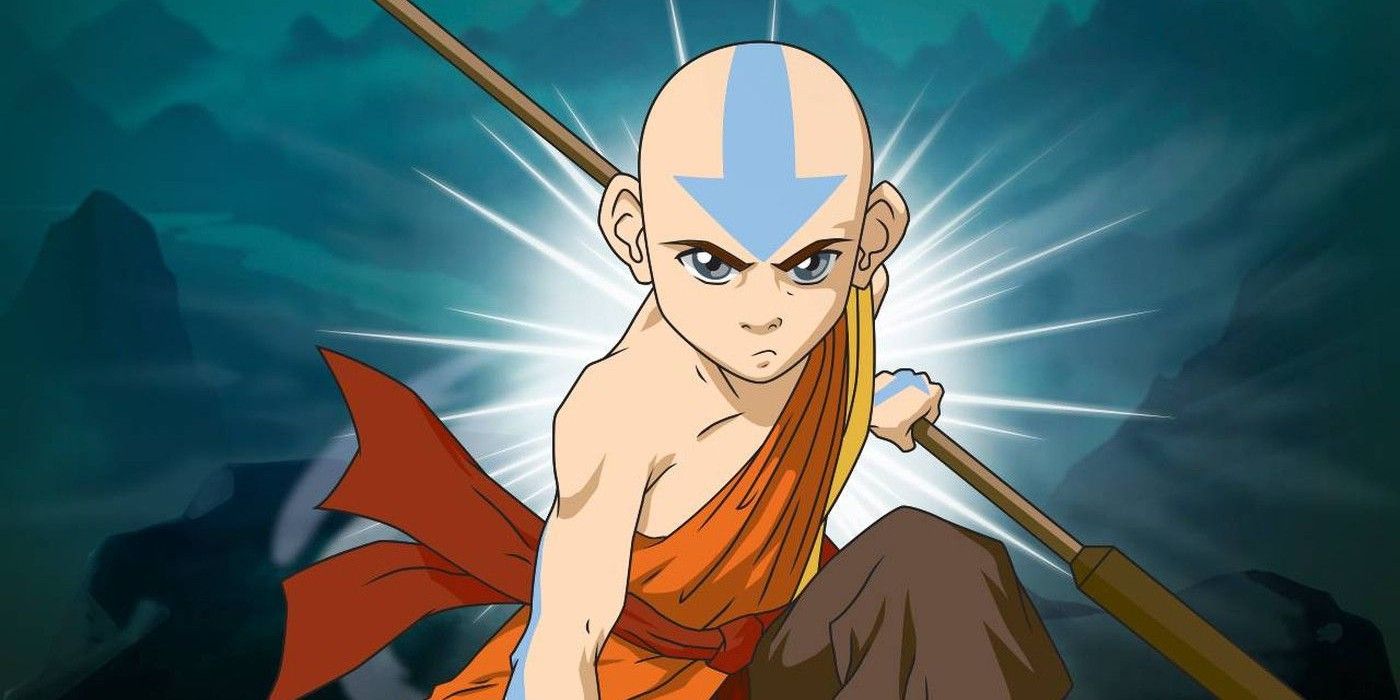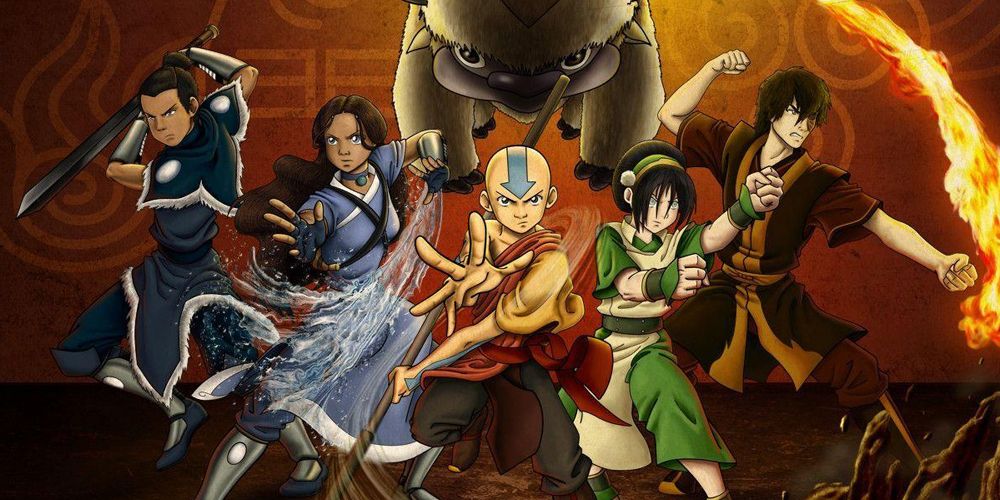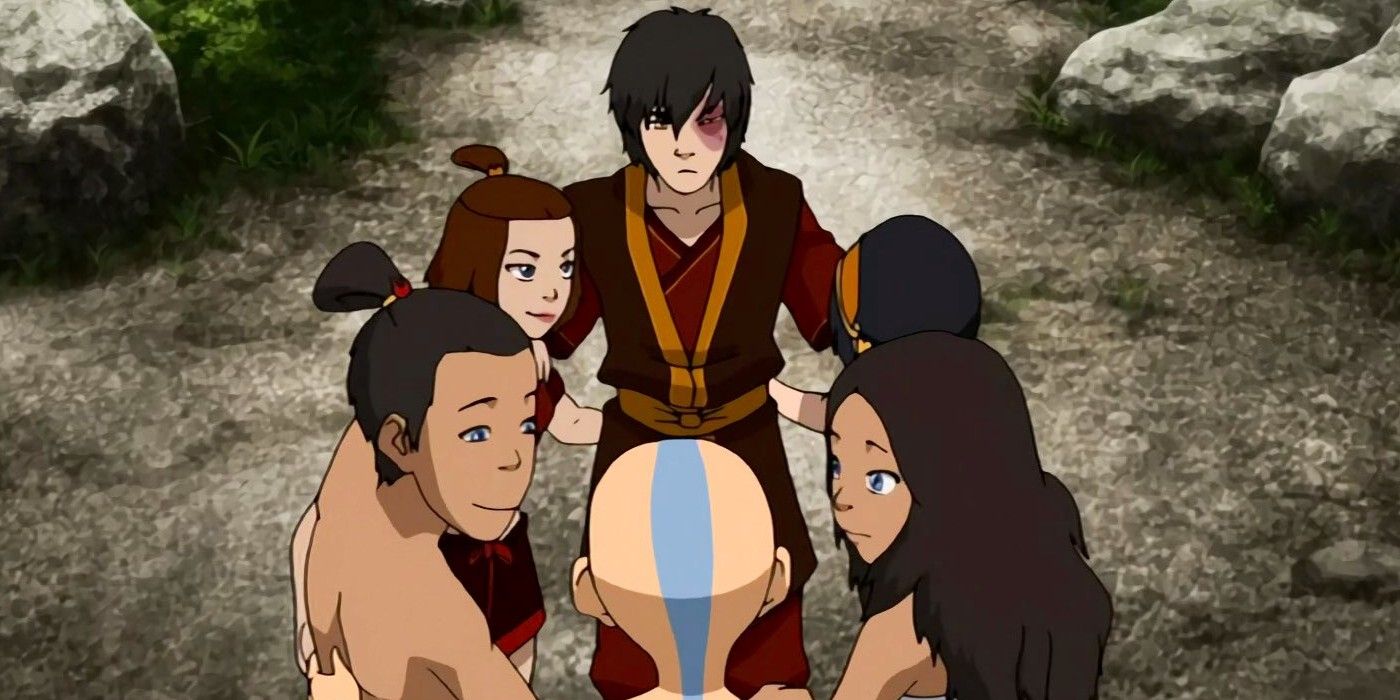Avatar: The Last Airbender is one of those shows that keeps growing. It was popular when it was first released on Nickelodeon, and it’s continued to pick up steam, and viewers, in the following years, particularly after being made available on Netflix. But what makes the show such an enduring pop culture reference?
It’s easy to say it’s due to the storytelling. Avatar: The Last Airbender divides the world into very different, defined groups, something a lot of popular franchises, like Divergent and The Hunger Games have exploited, to great success. And yet, it plays on the elements, and introduces a little bit of magic – or abilities, that make sense within the context of the world. All of this while focusing on the relationships between the characters, and their emotional growth. Basically, Avatar: The Last Airbender is everyone’s favorite YA novel made animated show, with a bunch of teenagers running around, in charge of saving the world.
As the genre dictates, some of these teenagers have powers, some don’t. One of them is the Chosen One. There’s a romance. A villain is redeemed and ends up joining the side of the good guys. One member of the group is the comedic relief, who ends up being much more than that. Avatar: The Last Airbender isn’t shattering any stereotypes, if any, it’s taking advantage of all of them. And, it must be mentioned, doing so while relying on Asian themes and visuals, without any Asian or Asian-American writers.
The show avoids any big missteps in this regard, by focusing on the character and genre stereotypes previously discussed but avoiding cultural stereotypes. The four nations within the show are distinct, and the creators made no secret of the fact that they’d drawn from Japanese, Chinese, Indian, and Inuit aesthetics to inform the Fire Nation, Earth Kingdom, Air Nomads, and Water Tribes respectively, and yet the people in these nations are treated as individuals. If anything, the show is borrowing less from the fixed idea of what each culture is supposed to be or look like, and more from the history. This means that the blend of cultures is never used as a punchline, much less made the butt of the joke. Seems like very little to ask, but history has proven otherwise.
But compelling storytelling isn’t always enough to make a popular show. Even following fairly well-loved tropes shouldn’t be seen as the only reason for Avatar: The Last Airbender’s popularity. In truth, the show manages to capture lightning in a bottle in a way few animated or live-action shows have managed. It does so by remaining firmly focused on a group of friends, giving all the protagonists interesting, distinctive storylines and yet never forgetting that people invest in relationships, not plot.
The show also sets some standards in the way it treats some very common tropes. Redemption arcs are a dime a dozen, but very few in entertainment have ever been handled with as much grace as Zuko’s on Avatar: The Last Airbender. This is made easy by the fact that the show clearly presents Zuko as someone doing bad things for the wrong reasons, and yet never someone inherently evil. Zuko’s in pain and lashing out, which makes it hard to like him when the people he’s lashing out at are the heroes of this tale. But later, when Zuko’s pain turns into purpose, it’s very easy to forgive him, and accept him as part of the group.
This is especially true because Zuko’s redemption arc is internal. It would have been easy to make it about a romance – maybe with Katara or Sokka – but Zuko doesn’t change for someone else. He changes for himself. And maybe, he changes because he always had someone – Uncle Iroh – there to point him in the right direction, and have faith that he would, one day, find his own way in life.
Zuko isn’t the only one breaking stereotypes, though. Aang is the typical protagonist with the weight of the world on his shoulders, and yet he’s also a kid, desperate to have friends, and with a very strong moral compass. In the end, the world doesn’t change Aang. Responsibility doesn’t break him or make him harsh. He changes the world, for the better.
Similarly, Katara is anything but a stereotypical love interest. Since the show never truly focuses on the romance with Aang fans know ends up developing, she’s given the opportunity to just be a sister, a friend, and a Water bender. Sokka, meanwhile, might be the comedic relief, but he’s also a skilled fighter, a superb strategist, and loving friend. Toph, on the other hand, is both a child of neglect, and someone who desperately needed the family she found in the group. Oh, and yes, she’s the best Earth-bender the world has ever seen, bar none.
Avatar: The Last Airbender isn’t the first story about kids having to band together to save the world. It’s not the first story where those kids are very skilled at what they do, and fully capable of doing so. And it’s not the first to focus on the bonds of friendship as family. But it does such a great job of combining all of those things with interesting, memorable characters, and a pretty differentiated setting, that it’s not hard to see why it’s become a fan favorite. And it doesn’t hurt that the story doesn’t end there. For all those who loved Avatar: The Last Airbender, there’s always a chance to revisit the world – and some of the characters – in The Legend of Korra. Sounds like a pretty good deal.



